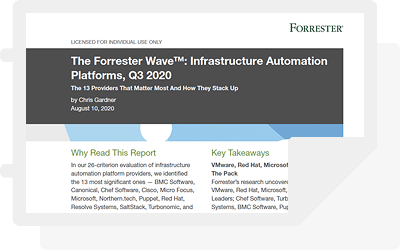You’ve probably heard the buzz phrase “single pane of glass” more times than you care to admit. It’s typically used to convey the benefits of an enterprise-level solution that unifies a bunch of data into a single dashboard interface.
Questions to Ask
When you are talking to someone extolling the virtues of their “single pane”, here are some questions to ask:
- Does “single pane” mean one dashboard where all data resides or where all workflows begin?
- If a right-click launches into another interface is it no longer a single pane?
- Is it one solution that meets the needs of IT with multiple interfaces?
We should consider banning the term “single pane of glass” and concentrate more on what it is we’re actually talking about: bringing disparate sources of data together to gain actionable insight. That’s the value, regardless of what we end up calling it.
Current State of IT
“Managing IT has gotten so complex that data streams of performance, availability, and business insight metrics now span an ever-increasing, widely-distributed architecture—through private and public clouds, data centers, remote sites, mobile users, and even ‘things.’ There’s no secret about how to address this data volume. The right data must be in the hands of those who make critical decisions about the data and the faster, the better.” -IT Pro, BMC Software
Most IT shops are simplifying their approach in order to avoid piling up monitoring tools and to reduce fire drills and war rooms. It’s not uncommon for different departments—for example, and operations—to get defensive, lean on their own tools to justify their performance, and blame issues on others. Promises that a “single pane of glass” can solve this problem are appealing. But are those promises realistic?
Operational Dashboards
IT staff design operational dashboards based on devices, events, infrastructure and/or applications. They then set static or dynamic alerts for their KPI’s.
If a business critical application is down even for just a few seconds, users click away and revenue drops. If the app is down longer brand loyalty is at risk. The face of many companies now is their application presence and their user’s experience. Think of Airbnb, Uber, Turo, Amazon, and others. Having operational dashboards in place that can catch and mitigate outages is essential.
Business Value Challenge
Once you master “find-and-fix” workflows with operational dashboards, you create the space to innovate and undertake strategic projects. Innovating and driving strategic change require you to “up-level” your operational dashboards to a business value dashboard that enables you to look more broadly than operations to all the value drivers in your business.
Business value dashboards reflect metrics that drive the whole business, not just IT operations. Business drivers are unique for each enterprise and IT staff need to look beyond out-of-the-box, boiler plate products. The ideal is a dynamic solution with a common framework that can bring data in from anywhere, layer it with analytics and intelligence and visualize it in an actionable, unified view. BMC TrueSight is such a solution.
Real World Scenario
When Sarah Palin announced her endorsement of Donald Trump, she was wearing a striking sweater that got a lot of attention on social media. Within a few days that sweater was sold out from all suppliers.
Let’s say you had real-time access to the trending social media sentiment on Sarah Palin’s sweater and you tied it to your online ordering process. You could dynamically adjust pricing to capture more of the market value and preemptively order stock before your competitors. This is an example of how a business value dashboard empowers business owners to react to dynamic market data and increase their business bottom line.
Achieving Actionable, Business Value Dashboards
Using BMC TrueSight solutions you can configure the kind of business value dashboards that provide actionable insight from the data you collect from applications and infrastructure and combine it with data from other sources such as social media and end user behavior.
By moving beyond the idea of a “single pane of glass” to a business value dashboard powered by BMC TrueSight solutions, you can help business line owners to make more informed business decisions, reduce the amount of time you spend on day-to-day operations, and free up time for innovating. Manage your datacenter and industrial IT infrastructure while expanding into modern, digital IT service delivery.







